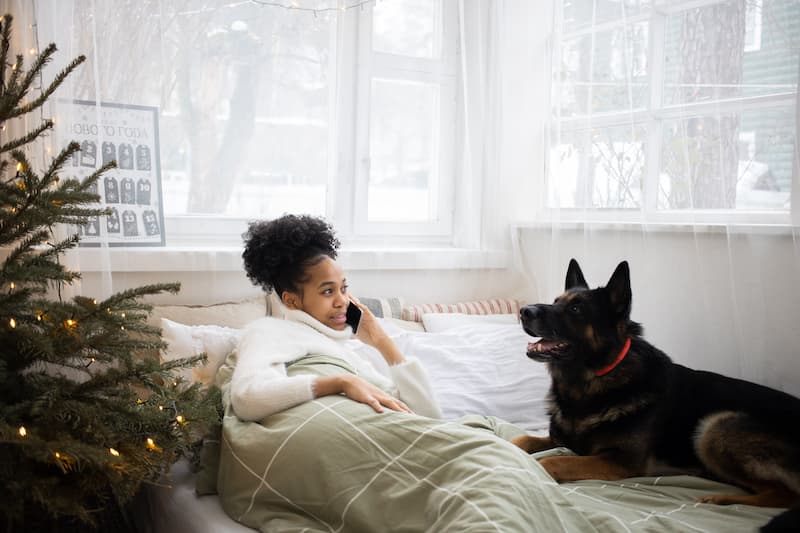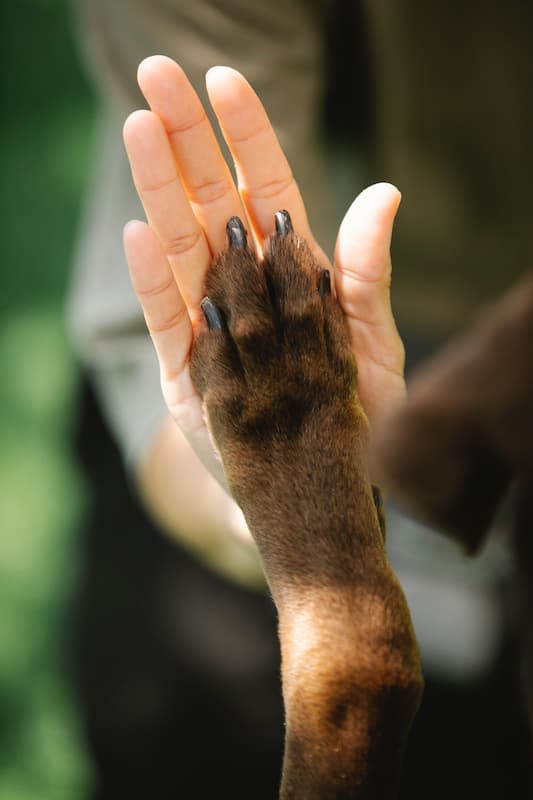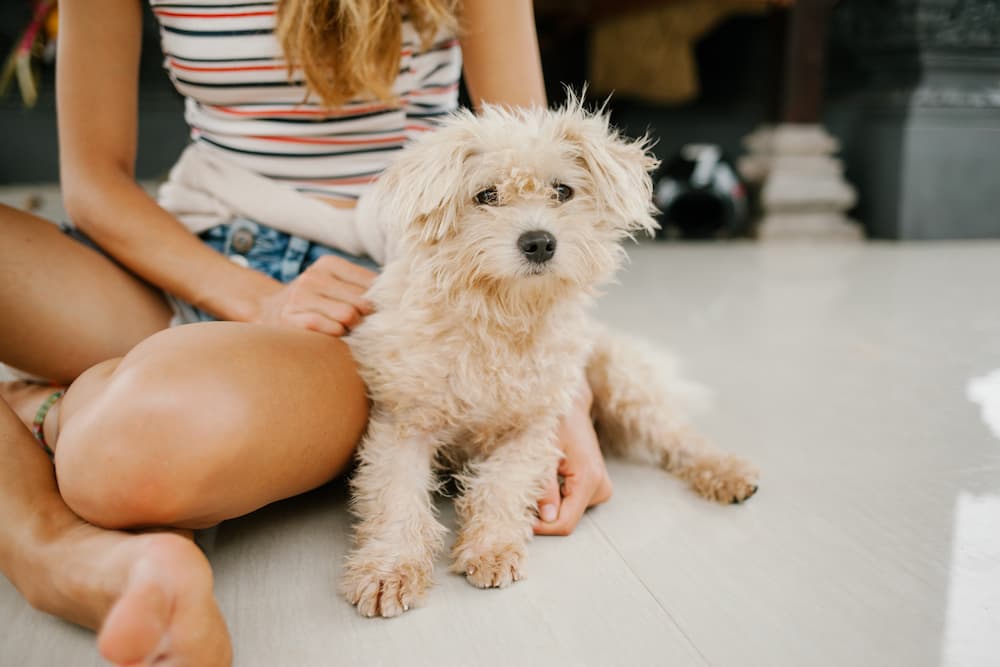If only dogs could talk, wouldn’t that be such a wonderful thing? Aside from sharing emotions like happiness, joy, and love, they could also communicate their worries, woes, and negative emotions that can affect their minds and bodies.
Sadly, dogs can’t talk, and therefore, it is our obligation as their wards to ensure that we anticipate and assist our canine companions as best we can.
Anxiety is a primary emotion that affects most dogs and can be pretty uncomfortable for both dogs and their owners. Anxiety can also significantly affect their general health and well-being.
11 Symptoms of Anxiety in Dogs
Luckily, are identifiable symptoms and specific treatments that will help both you and your dog:
1 Urinating more frequently or uncontrollably
Your dog urination begins suddenly urinating often or if he urinates while agitated.
2 Lack of appetite or not eating at all
Food aversion is a sure way to tell that something is wrong with your dog. Dogs love treats, snacks, and feeding time, so you should be concerned if your canine companion stops eating.
3 Shaking, shivering, or whimpering
Shaking and shivering can also accompany urination and is a significant sign, especially if your dog is house-trained. Another common sign is whining.
4 Fidgety or excessive movement
If your dog is heavily breathing, or panting even in average temperatures, this is a sign of anxiety.
5 Destruction of household items
Is your dog suddenly chewing on the furniture or ripping holes in your favorite socks? Many people confuse this behavior with their pet “just being naughty “; however, dogs use this behavior as a “release” for their anxieties.

6 Cowering in a corner or escaping the house or yard
Dogs tend to want to put distance between themselves and whatever is affecting them, to either find a place to hide or run away from it.
7 Excessive barking, howling, crying, and whining
This happens especially when the owner isn’t home: Many pet owners have had this experience. Some will tell you that this is a typical sign of separation anxiety.
8 Frantic digging or attempting to dig
While digging is an instinct for dogs, it can also mean that your pup is distressed. It can also occur if your dog is kept outside for long periods without entertainment. Dogs also dig when they are afraid and try to find a safe space.
9 Avoiding eye contact or looking away when being given attention
Does your dog seem unusually quiet and doesn’t respond to you right away and look away if you try to look at them? He could be stressed! A dog will most likely not want to look at you when panicked as his senses are overloading with whatever may be making him anxious.
10 Excessive licking or chewing at skin or paws, self-harm
Licking and chewing the skin and feet is a sign of stress in dogs. A dog licks its skin to calm itself; however, too much licking can cause stress Dogs also tend to lick their owner during a stressful time as we provide a sense of safety for them. Dogs also lick their lips more frequently when they are afraid. Biting at their paws is also a stress response. This could be self-harming, especially if your dog’s bite too hard.
11 Baring teeth or whites of the eyes
Dogs mostly bare their teeth when they fear being threatened.
“Whale eye” is when a dog shows you the whites of its eyes; this indicates that your dog is worried or stressed.
Common Types of Anxiety in Dogs
There are different types of anxiety in dogs; some of the most common ones are:
Loud noises
Loud sounds like horns, fireworks, construction, and even barometric pressure, can contribute significantly to your dog’s anxiety. Imagine if a loud sound could startle you; a dog’s hearing is 4 times greater than human beings and, therefore, can be more traumatizing and irritable to your furry friend.
Separation anxiety
This is the same as shown in human children; a child separated from his mother will cry, act up, or sometimes self-harm when they feel abandoned or lonely. Similarly, your dog looks to you as his alpha, and when you leave for work or lock them out for extended periods, they feel isolated and lonely.
Changes in the environment
Perhaps you are moving house, taking a road trip, visiting a new crowded place, or even just a trip to the vet. Your dog senses a change and can become anxious. Studies have shown that even a difference in the dynamic and the number of people in a home can have a pivotable effect on your dog.
How you can Help your Dog

Show a little extra love
Cuddling is a great way to reassure your dog of your presence. Gently talk to your dog, start with gentle strokes to his fur, and gradually cuddle him. It has been proven that cuddling your pet releases oxytocin, commonly known as the “love hormone” for both you and your dog. Oxytocin stimulates a feeling of security, happiness, and love.
Condition your dog to overcome anxiety
This method is best begun at an early age; however, you can also train mature dogs. If your dog is afraid of a gate or grill slamming shut with the wind, try reassuring your dog when it happens and perhaps take your pet over to the entrance to investigate where the sound came from. In cases such as weather conditions, keep your dog close to you. Try playing some soft music or switching on your TV to help drown out the affective sound. Learn more on how to train your fearful dog.
Create a haven for your dog
During a bout of doggy anxiety, the key is to reassure your pet that he is safe; during thunderstorms, for example, if you have allocated space for your dog in the house or the yard, move them inside or closer to where you are. Set up a soft bed with blankets to be as comfortable as possible.
Medication
Sometimes the methods above could be ineffective because your dog could be too highly strung. It is advisable at this juncture to seek medical intervention. I highly recommend Calming supplements (link to calming supplement) from Top Dog groomers are specifically designed to “take the edge off” they are 100% organic, which means they are safe for your dog.
Suppose anxiety in your dog is left untreated, your dog could develop severe behavioral issues, which often leads to some dog owners giving up and rehoming or surrendering the dog to shelters. Therefore, you must try to understand your dog and help him manage his anxiety.

